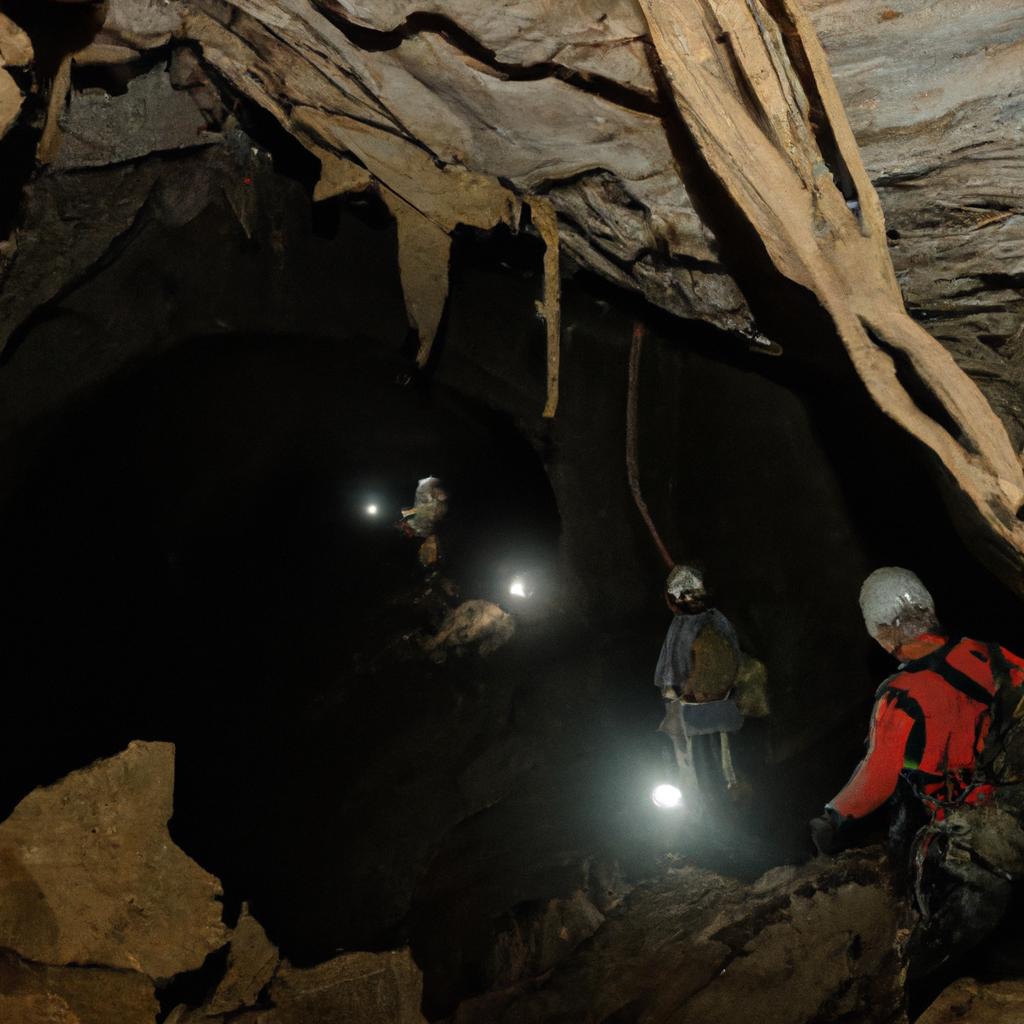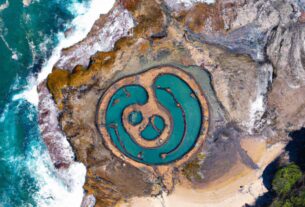Have you ever wondered what lies beneath the surface of our planet? Krubera Cave, also known as Voronya Cave, is an awe-inspiring testament to the hidden wonders of the Earth. Located in the Arabika Massif, Abkhazia, Georgia, this mesmerizing cave has captivated explorers and cavers for decades. Let’s embark on a virtual journey to uncover the secrets of one of the deepest caves in the world.
Location and Exploration
In the heart of the Caucasus, nestled within the rugged Arabika Massif, lies Krubera Cave. This remarkable geological formation was first discovered in 1960. However, it wasn’t until 2001 that the true extent of its depth was measured by a Ukrainian expedition, revealing a staggering 2,191 meters (7,188 ft). Since then, intrepid explorers have undertaken numerous expeditions to chart and explore this hidden gem, with the most recent one taking place in 2019.
Venturing into the depths of Krubera Cave is not for the faint of heart. It demands exceptional physical fitness, technical expertise, and an insatiable thirst for adventure. The complex and treacherous terrain, coupled with the extreme depth, render this cave one of the most challenging to explore. Narrow passageways, steep walls, and deep chasms await those who dare to venture forth. The journey to the deepest reaches of Krubera Cave can span several days, while the ascent can take even longer.
Geology and Formation
Krubera Cave, a limestone marvel, owes its existence to millions of years of geological processes. Formed during the Oligocene period, when the Arabika Massif began to take shape, this subterranean wonder is a testament to the power of water and time. Underground water slowly dissolved the limestone, creating a labyrinth of passages and chambers.
The unique geological features within Krubera Cave include expansive halls, narrow canyons, and vertical shafts. Adding to the cave’s allure are its breathtaking crystal formations, adorned with magnificent gypsum crystals, stalactites, stalagmites, and helictites. Each formation tells the story of water’s relentless journey through the cave, carrying minerals that gradually crystallize over time.
Studying the Geology and Its Significance
Unraveling the secrets of Krubera Cave’s geology is the key to understanding the processes that shaped this extraordinary underground world. The cave’s limestone formation bears witness to a combination of water erosion and tectonic activity. The cave’s imposing walls and deep shafts are a testament to the region’s turbulent geological history, while the passages and chambers stand as testament to the relentless power of water.
The significance of Krubera Cave’s geology extends beyond its natural allure. Situated in a tectonically active area, the Arabika Massif offers scientists valuable insights into the geological processes that have shaped the Caucasus region. Additionally, the cave’s stalactites and stalagmites act as time capsules, preserving vital information about past climate conditions. Analyzing these formations enables scientists to reconstruct historical climate patterns and gain a deeper understanding of how climate change may impact the region’s future.
Fauna and Flora
Descend into the depths of Krubera Cave, and you will encounter a unique ecosystem teeming with life adapted to thrive in eternal darkness. Invertebrates such as beetles, spiders, and crustaceans call this cave home. Among the cave’s most fascinating inhabitants are the eyeless cave spider, the blind cave beetle, and the troglobitic shrimp.
These incredible species have evolved extraordinary adaptations to survive in this harsh environment. The eyeless cave spider has honed its sense of touch, skillfully navigating the dark passages. The troglobitic shrimp, devoid of pigmentation, relies on its elongated antennae to locate sustenance in complete darkness.
Preserving the delicate balance of Krubera Cave’s fauna and flora is of utmost importance. Human activity, including tourism and exploration, can pose significant threats to the cave’s fragile ecosystem. Implementing measures to safeguard this unique habitat, such as limiting visitor numbers, enforcing strict safety regulations, and promoting responsible tourism practices, becomes crucial.
Tourist Visits and Safety Measures
Due to the challenging terrain and extreme depth of Krubera Cave, it is not open to the general public for tourism purposes. Only experienced cavers who are members of recognized caving organizations have the privilege to explore its depths. These adventurers must possess the necessary technical and physical skills, as well as the appropriate equipment, to safely navigate this underground labyrinth.
Aspiring explorers interested in caving must partake in training programs, courses, and expeditions before attempting to enter Krubera Cave. Safety measures are paramount when delving into its depths, as the risks of injury or even worse are ever-present. Cavers must equip themselves with protective gear, including helmets, headlamps, and harnesses, and adhere to strict safety protocols throughout their journey.
Responsible tourism practices play a crucial role in preserving Krubera Cave. The delicate ecosystem within is highly sensitive to disturbances. Thus, it is imperative to follow ethical and sustainable practices when exploring the cave, refraining from leaving any trace, disturbing the cave’s fauna and flora, and damaging its geological formations.
The Future of Krubera Cave
The future of Krubera Cave hangs in the balance, as it faces potential threats that could jeopardize its delicate ecosystem. Climate change, pollution, and human disturbances cast shadows over this natural wonder. Rising water levels due to climate change may disrupt the cave’s unique ecosystem. Pollution can harm the delicate balance of its fauna, flora, and geological marvels. Meanwhile, uncontrolled tourism can irrevocably damage the cave’s fragile environment, leading to its eventual closure.
Protecting and conserving Krubera Cave for future generations necessitates the implementation of effective conservation strategies. These strategies may include limiting access to the cave, enforcing strict safety measures for cavers, and fostering responsible and sustainable tourism practices. Raising awareness about the cave’s significance and the challenges it faces is paramount, along with supporting research and monitoring initiatives to better understand and safeguard its unique ecosystem. By taking these steps, we can ensure that Krubera Cave remains an extraordinary natural wonder for generations to come.
Ready to explore the depths of Krubera Cave? Join the ranks of intrepid adventurers and embark on a journey to witness the wonders hidden beneath our feet. Discover the intricate geological formations, crystal-clear underground rivers, and captivating fauna that thrive in this extraordinary subterranean realm.
To learn more about Krubera Cave and other natural wonders, visit TooLacks, and let the mysteries of the world unfold before your eyes.



